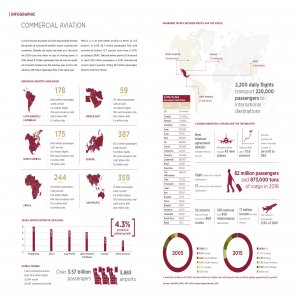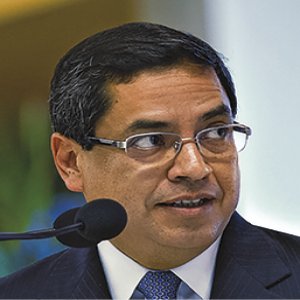New Technology Solutions to Improve Passenger Experience

New Technology Solutions to Improve Passenger Experience

STORY INLINE POST
Q: How does SITA specifically support airlines and airports?
ML: SITA works with several airlines that in total service 85 percent of Mexican passengers, including Interjet, Volaris and Viva Aerobus. In March 2016, SITA became Aeroméxico’s technology partner to deploy telecommunication services internationally. In 2016 we focused on improving Mexico’s airport telecommunications infrastructure network to better track passenger needs and to offer more cross-selling through those methods.
UT: SITA is part of the industry. The company is a member of many aviation organizations like IATA, ACI and ICAO, and is in close contact with both airports and airlines. We bring them together to create value for the industry.
Q: How do passenger demands both at airports and in-flight influence operators?
UT: Passenger needs are increasingly considered in airport operations, especially Wi-Fi as many people request a constant internet connection during their time at the airport. Other needs vary widely depending on the passenger’s profile. For instance, elderly people tend to prefer interacting with a representative much more than a younger traveler. But the cross-generational trend away from passengers interacting with other humans has led to most of the process, from booking to flying, being done online. Passengers also want online connectivity during flights just as they do on land.
ML: We have noticed passengers expect a personalized service during their airport stay, which can be provided through mobile marketing. They also want more automated services and updated information about their destination and the activities they can do on arrival. We have the tools and technology to generate a larger number of services, articles and promotions to final users. Offers can even be personalized to a passenger’s personal preferences. The only obstacle we face is convincing service providers and sellers to participate in the model as different stakeholders, including airlines and retailers, compete for passengers’ attention. The challenge is to get all of them to collaborate and provide a single experience for the passenger that matches their preferences. Passengers dislike switching between different service providers so it is of interest to provide a seamless experience.
Q: How are airlines and airports incorporating new technology into business practices to benefit passengers?
ML: Across the sector, there has been a push toward improving passenger experience across many areas. IATA passed Resolution 753, which will come into effect in 2018. This will require airports to implement better luggage-tracking systems, involving closer suitcase tracking at all times to be sent to passengers’ mobile phones. For airlines, online platforms represent opportunities to bring in extra revenue, improve their operational efficiency and provide better passenger experiences. Aircraft are large data centers that generate information for several indicators. Collecting, processing and sharing this information allow airlines and passengers to make real-time decisions to anticipate disruptions, delays and damages. Years ago, pilots were limited to weather information at the time of take-off and they received no updates if the weather changed at their destination. Now, they can access this information continuously and use it to change their flight paths. This allows them to improve the flight experience and optimize fuel use.
UT: Airports are also providing more security and information services to the final user. This benefits passengers and airports are using this technology to acquire revenue through new means. One strategy is to use business intelligence to streamline passenger flow and lead travelers to areas that might interest them. Modern passengers are connected through mobile devices and motivated to publish their actions and interests. Cellphone applications can track this information and use it to lead passengers toward retail stores and other amenities of their interest.
























